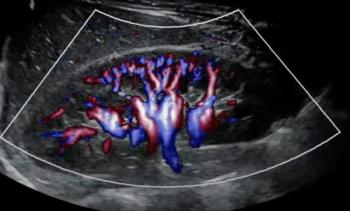
Intersection of Big Data and Interactive Virtual Reality
Big data meets interactive virtual reality.
Being an advisor to several medical imaging publications, requires one to provide a prognosis of what the key dynamics in medical imaging might be in the following year.
At this point in time, I am personally involved in several areas: big data (BD) and interactive virtual reality (IVR). Both areas are beginning to take hold in terms of impacting patient outcomes (PO). This discussion is focused on the synergy between BD and IVR, and the resulting potential for significant gains in PO – an important dynamic for medical imaging.
The
The other critical element in the knowledge equation, intuition, has been shown to be driven by
Consider IVR as the ability to view an object in open 3D space and directly interact with the object (eg, removing a tumor electronically).
Radiologists have noted, that IVR provides a way to communicate more effectively with surgeons. Surgeons have noted that IVR allows them to finally achieve surgical visualization, the ability to view anatomy in a manner that corresponds to their 3D world view – they never open up patients and see 2D views.
Essentially, IVR represents a new paradigm, or “language,” with which different specialists discover an enhanced ability for communicating more effectively with one another.
Why might 2017 be the key year to realize the potential of the BD/IVR intersection? Based on several years of clinical trials, significant improvement in the core areas of PO, clinical efficacy (CE), and workflow (WF), have been demonstrated in a number of applications, due to IVR driven increases in knowledge.
We might think of IVR as focused on “doing the right things” and BD as focused on “doing things right.” A case in point would be a Protocol for optimizing both CE and WF for virtual colonoscopy. Based on the intuitive properties of IVR, a concept of dividing the colon into linear segments emerged with each segment separately analyzed for polyps. This breakthrough led to significant gains in both clinical efficacy and workflow.
BD has already been effectively applied to
The intersection of BD and IVR therefore provides a significant opportunity for achieving improvements in PO. We could think of this
Newsletter
Stay at the forefront of radiology with the Diagnostic Imaging newsletter, delivering the latest news, clinical insights, and imaging advancements for today’s radiologists.




























